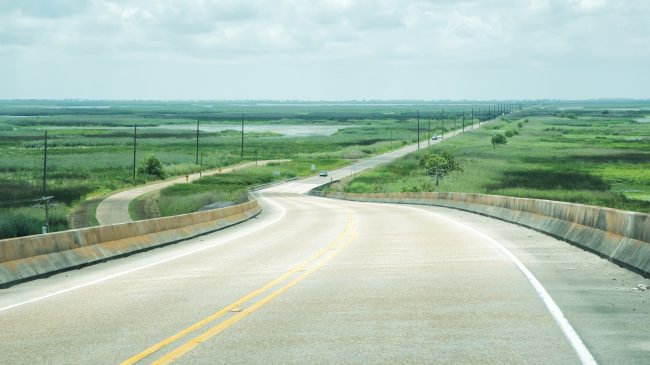Louisiana’s highways are in bad shape. According to the Reason Foundation’s latest Annual Highway Report, Louisiana highways rank 37th out of 50 in overall performance. Louisiana is in 39th place for deficient bridges, 40th for poor urban interstate pavement, and 42nd place for rural interstate pavement.
Most highway spending comes from state and federal gas taxes. Efforts to raise gas taxes are unpopular as shown by a recent survey conducted by the engineering firm HNTB. While majorities are unhappy with congestion and decrepit roads and bridges, only 27 percent favored an increase in a tax (like the gas tax) paid by everyone. By contrast, 46 percent were willing to pay a toll to use new or replacement highways, bridges, and tunnels. That difference may be the key to fixing a big part of Louisiana’s highway problem.
Twentieth-century tolls were unpopular — in part because of long lines at toll plazas, rear-end collisions, and sitting in line breathing exhaust fumes. But any new toll-financed project today would use all-electronic 21st-century tolling. A transponder on your windshield reads your toll account number and debits your prepaid account. And it does this at highway speed. Major new highway projects have been financed recently in Colorado, Florida, Texas and Virginia using all-electronic tolling.
These states have also pioneered a new way to manage the development and operation of major highway and bridge projects. It’s called a long-term public-private partnership (P3). The state transportation department runs a competition to select the best team that will design, build, finance, operate, and maintain the bridge or highway for a long term — such as 50 years. This is much like the long-term franchise granted to investor-owned electric utilities. In fact, this process converts major highway projects into a kind of investor-owned utility, subject to detailed provisions in the franchise to protect the public interest.
This P3 model is especially well-suited to transportation megaprojects — such as a new billion-dollar bridge across the Mississippi or replacing and widening a worn-out stretch of interstate highway. All over the world, most megaprojects experience significant cost overruns, late completion, and fewer customers than projected. Under traditional highway contracts, that is no skin off the construction company’s back. Taxpayers end up paying for most cost overruns, and the state may not have enough money to properly maintain the new bridge or highway.
But in long-term P3s, these risks are transferred to the private investors, via the legally enforceable long-term franchise. In most toll-financed P3 projects, the risk of not enough toll-paying customers is also transferred to investors. They are also contractually obligated to provide proper ongoing maintenance for the entire long term of the franchise. This is a much better model for procuring megaprojects than the typical 20th-century process where nearly all risks are on the taxpayers.
Louisiana legislators enacted P3-enabling legislation more than a decade ago and updated it in 2016, but so far, no projects have been built. Earlier this year, the state transportation agency selected three best-qualified teams to bid for the replacement of the Belle Chasse Bridge-Tunnel, from which it hopes to select the winner next year and negotiate the long-term agreement. A much bigger (and much-needed) project would be the $1 billion replacement of the aging and ailing Interstate 10 bridge in Lake Charles. It is structurally deficient and lacks adequate traffic lanes.
Shawn Wilson, head of the Louisiana Department of Transportation & Development, has said that toll financing is the only realistic way to pay for such megaprojects. And given the known risks in megaprojects, procuring them as long-term P3s would be wise.
Voters are right to distinguish between tolls and gas taxes, and to prefer the former for needed new projects. With a gas tax increase, the voter can be sure of only one thing: paying more to drive, every day, every mile. With tolls applied to specific projects, the voter can be sure of never paying a toll unless the new or rebuilt highway or bridge improves the voter’s travel and is a good value for the money spent.
This article first appeared in The Advocate.

